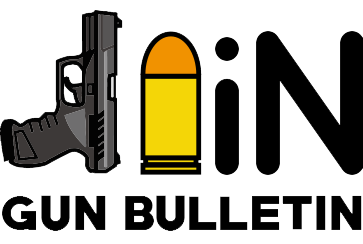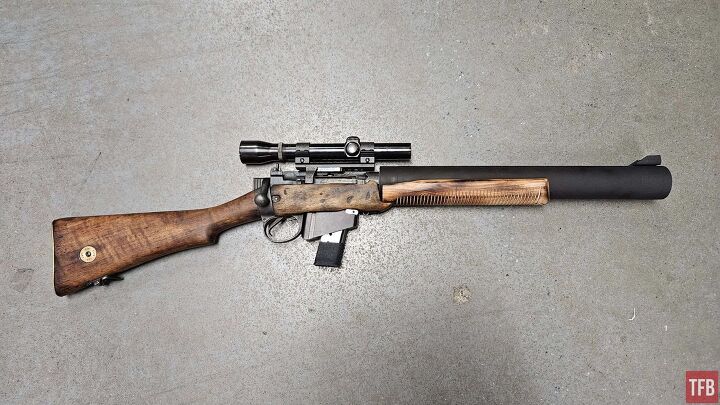This week on Silencer Saturday we have a very unique suppressor. My buddy Collin made his own De Lisle (DIY-Lisle?) carbine, and that seems like the kind of thing you all would be interested in. He answered some questions for me about the gun, and we took it to the range to put a few rounds through it.
Silencer Saturday @ TFB:
- Silencer Saturday #350: New Direct Thread Gemtech Silencers
- Silencer Saturday #349: Angstadt Arms Prophet Integral Silencer
- Silencer Saturday #348: Suppressing The Uzi
- Silencer Saturday #347: The Silencer Central Banish 46-V2
- Silencer Saturday #346: SilencerCo’s Hunting Suppressor Evolution
Disclaimer: Building your own NFA item could land you in federal prison if you don’t follow the applicable laws. Know what you are doing, and what laws apply, before you make your own suppressors. There is also a substantial risk of hurting or killing yourself while building or testing a silencer. You have been warned.
Q&A
Q: Where did you get the idea to build your own De Lisle?
A: From Cotton Branch Custom. They seem to do awesome work, and I think they are the only company that is currently making De Lisles, but they were a touch out of my budget. His are undoubtedly better and more historically accurate.
Q: What donor gun did you use?
A: I used a C-grade Mk4 No1 Enfield from Royal Tiger Imports. The barrel was shot, and the gun was covered in rust, but I tossed the barrel and reblued the gun. It was a great donor gun for $200.
Q: You are no stranger to the Form 1 process to get a tax stamp for an NFA item you are making. What was the Form 1 process like for this silencer?
A: The process for a Form 1 silencer has changed over the years. Overall it is very easy, assuming that the ATF’s website does not crash. The biggest hurdle is acquiring a digital fingerprint card. These have to be submitted as .EFT files and will likely require you to pay someone who specializes in this. One new addition to the Form 1 process that is specific to the silencer application is that you must describe and show proof of how you plan on manufacturing the silencer. This is meant to weed out people planning on using “solvent traps.” I simply sent in a picture of my lathe and had no issues.
Q: Tell us, how did you design the silencer?
A: Honestly, the design was extremely limited by the machinery I had access to. I have a cheap Harbor Freight lathe, a band saw, and a drill press. I did some quick mock-ups using TinkerCad, a CAD software meant for kids.
(Note: He’s talking about one of those bench top mini lathes, not a full-size industrial lathe).
Q: How did you make the silencer?
A: I took a 1.75″ piece of aluminum round bar, drilled a 1/2″ hole down the center, and treaded for 5/8×24. I then drilled 4 – 1″ holes horizontally to allow gasses to escape. Then, I used the bandsaw to remove more aluminum from the monocore, leaving three simple baffles and an endcap. This is by no means the most effective design, but I was limited by equipment and experience. Additionally, I was limited to making the silencer using a monocore baffle system, as I pin/welded it to the barrel to avoid an SBR stamp. Finally, I 3D printed a cupped barrel sleeve that contains a roll of chicken wire. This causes further disruption of gasses and seals the back of the silencer.
Q: What is the sound performance like? What else would you compare it to?
A: It is pretty quiet. I’m positive it could be quieter with a more complex baffle design and the use of wipes, but the extreme volume helps make up for the simplicity of the design. I would compare it to similar, yet smaller commercial .45 silencers.
Q: How is that front sight attached?
A: I made the sight out of bent sheet metal and a brazed on brass rod for the front post. It simply bolts onto the outer tube of the silencer. It is not adjustable and holds a “minute of man” group at 50 yards. This is why I added the 2.5x Weaver scope.
Q: All in, how much did you spend making your own De Lisle?
A: C-grade Royal Tiger Enfield – $200
Rhineland arms new old stock conversion kit – $100 (not sure if these are still made)
Tax Stamp – $200
Aluminum bar stock, and miscellaneous hardware – $50
Hardwood baseball bat blank for handguard -$20
3D printer filament, CF nylon – $2
Scope – $30
Mount – $100
So about $400 for the bare gun, about $700 with stamp and optics.










